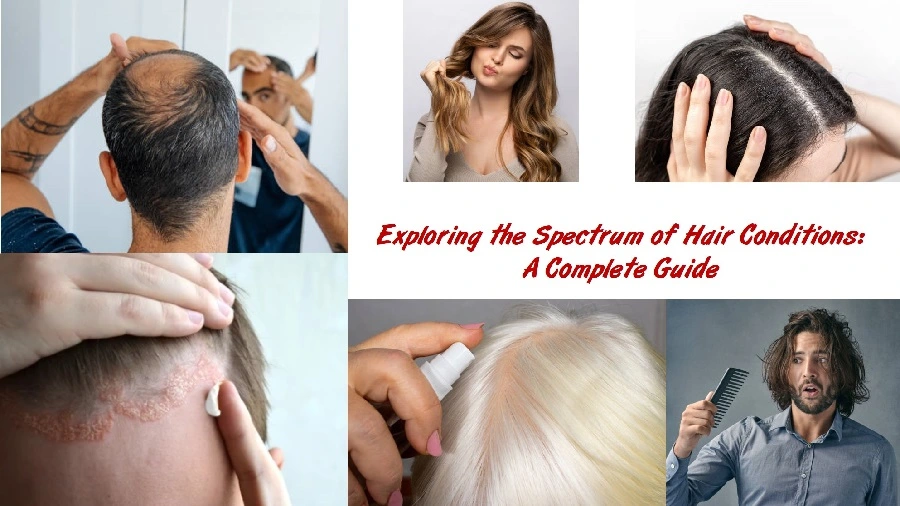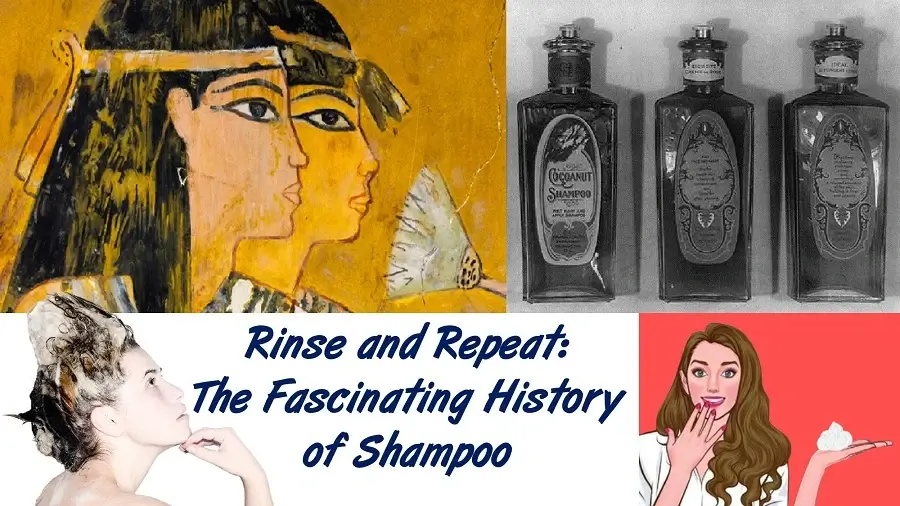
Introduction to the History of Shampoo
The history of shampoo, a seemingly mundane product in our daily lives, stretches back centuries, reflecting not only changes in personal hygiene but also the evolution of commerce and culture. Its humble origins as a simple concoction of natural ingredients have evolved into the vast array of formulations and brands available on today’s market, offering a fascinating glimpse into the interconnected realms of science, society, and personal grooming.
In this article, we will take a journey through time, exploring the origins, innovations, and transformative moments that have shaped the commercial shampoo industry into what it is today. Delving into its past allows us to gain a deeper appreciation for a product that has become an integral part of our modern lives.
What is a Shampoo?
People worldwide use shampoo as an essential part of their regular hair care routine to clean and maintain their hair and scalp cleanliness. Shampoos, typically in liquid or gel form, cleanse by replacing soap, removing dirt, oil, sweat, and other impurities from the hair and scalp, leaving the hair clean and refreshed.
The shampoo contains various ingredients, including surfactants like sodium lauryl sulfate, which create a lather and lift away dirt and oil. Besides cleansing, many shampoos also address specific hair care needs, such as dandruff control, hydration, color protection, and more. Some shampoos even include fragrances to leave the hair smelling pleasant.
To use shampoo, wet your hair, massage it into the scalp and hair strands, and then thoroughly rinse it out with water. People often follow up with a conditioner after shampooing to restore moisture and improve hair manageability.
History of Shampoo
The history of shampoo dates back thousands of years and has significantly evolved over time. It mirrors the evolving understanding of hair care and the creation of increasingly sophisticated formulations to meet consumers’ needs. Today, the shampoo market is diverse and caters to various hair types and preferences, offering a wide range of products.
Here is an overview of the history of shampoo given in the ensuing paragraphs.
- Ancient Civilizations
- Native American Cultures
- Pre-Columbian North America
- Pre-Columbian South America
- Medieval Europe
- Renaissance and Beyond
- Far East
- History of Commercial Shampoos
- Conclusion
1. History of Shampoo in Ancient Civilizations
Ancient civilizations can trace the concept of cleaning hair. The history of shampoo in ancient civilizations significantly differed from the modern practice of shampooing that we are familiar with today. While the concept of cleansing the hair and scalp was present, cultures and time periods varied the methods and ingredients used.
Here are some examples of shampooing practices in ancient civilizations:
a. Ancient Egypt
The history of shampoo in Ancient Egypt dates back to 3000 BCE. Moreover, they were known for their meticulous hair and scalp hygiene. Additionally, they used natural ingredients like animal fats, botanical extracts, and ashes to cleanse their hair. Furthermore, they employed combs and brushes made from wood, bone, and ivory to remove dirt and tangles. These practices, while rudimentary compared to modern products, were highly effective in maintaining cleanliness in their historical context.
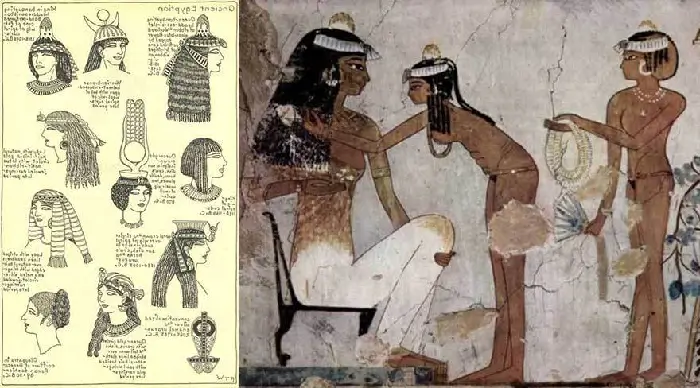
Personal hygiene was vital in ancient Egyptian culture, symbolizing purity and well-being. In contrast, while their shampooing methods were distinct from today’s standards, they had their own effective techniques for hair and body purification.
Soapwort Plant
The Egyptians utilized a plant called soapwort (Saponaria officinalis) to produce a soapy lather for cleansing. They crushed the roots of this plant to extract saponins, which are natural surfactants that produce a foamy lather when mixed with water. Subsequently, they used this lather to clean their hair and bodies.
Aromatic Oils
The Egyptians earned renown for actively using fragrant oils. They actively mixed oils, such as almond or olive oil, with fragrant ingredients like myrrh, cinnamon, and frankincense to actively create scented oils. Also, these aromatic oils were actively applied to the hair and body for cleansing and fragrancing.
Clay and Sand
In some cases, Egyptians employed a mixture of clay and sand as a cleansing agent. They applied this mixture to the skin and hair and then rinsed it off to eliminate dirt and excess oil.
Rinsing with Water
The Nile River water played a crucial role in their hygiene practices. They regularly bathed in the Nile or used water from the river for their cleansing rituals.
Personal Grooming Tools
The Egyptians employed various tools for personal grooming, crafting combs, and razors from materials like bone, wood, or bronze. They utilized these tools to style and maintain their hair.
b. Ancient India
The Indian subcontinent boasts a rich and ancient history of shampoo, dating back to the Indus Valley Civilization. Furthermore, Ayurvedic traditions are deeply rooted in this history of shampoo, incorporating natural ingredients, herbal remedies, and scalp massages. This practice, referred to as “champu,” not only emphasized hair cleanliness but also carried cultural and religious significance.
During the 16th century, Guru Nanak, the founder of Sikhism, made references to soapberries, Indian gooseberry (amla), and other herbs. People boiled these ingredients to create an early and effective shampoo that produced a natural lather called “phenaka.” Consequently, colonial traders in India adopted hair cleansing practices and introduced them to Europe, coining the term “shampoo.” It’s worth noting that the word “shampoo” likely originates from the Sanskrit word “champu,” meaning to massage or knead.
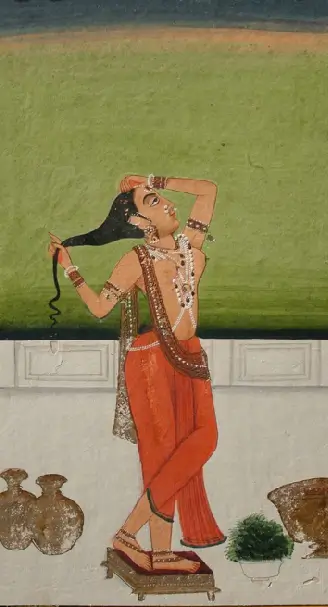
Here’s a brief overview of the history of shampoo in ancient India:
Ayurvedic Tradition
While exploring the history of shampoo in ancient India, we find that Ayurveda, an ancient system of medicine and natural healing, was deeply rooted in the practice of hair care and cleansing. Ayurvedic texts like the Charaka Samhita and Sushruta Samhita documented various herbal and natural remedies for hair and scalp care. Furthermore, these texts described how to maintain hair health through the use of herbs, oils, and massages.
Herbal Shampoo
Ancient Indians used a variety of herbs and natural ingredients to cleanse their hair. People commonly created herbal concoctions by mixing ingredients like amla (Indian gooseberry), reetha (soapnut), and shikakai (acacia concinna) for their cleansing and nourishing properties.
Massage and Oil Application
In ancient India, people incorporated scalp massages with oils as an integral component of hair care, along with the utilization of herbal shampoos. They utilized oils such as coconut, sesame, and amla for their conditioning and strengthening benefits. People held the belief that massages enhanced blood circulation stimulated hair growth, and preserved scalp and hair health.
Traditional Practices
Hair care rituals in ancient India often included religious and cultural significance. For instance, in Hinduism, the tradition of applying oil to the hair and then washing it off during baths or religious ceremonies was common. This practice symbolized cleanliness and purification.
Social and Cultural Significance
In ancient Indian society, people considered well-groomed hair a sign of beauty and good health. People took great care in their hair care routines, and it also served as a means of social bonding, as family members often assisted each other with oil massages and shampooing.
Influences on Other Cultures
The practices of herbal shampooing and hair care from ancient India influenced neighboring cultures and regions, including Southeast Asia and the Middle East. This knowledge of herbal remedies and hair care techniques gradually spread to other parts of the world.
c. Ancient Greece
Ancient Greeks did not have access to the wide range of shampoos and hair care products that we have today. Nevertheless, the history of shampoo reveals that they had their own practices and methods to maintain cleanliness and hygiene, including the care of their hair and scalp. For instance, they used a combination of olive oil and sand or pumice to clean their hair. Additionally, they would apply the oil to their hair and then use the abrasive materials to scrub away dirt and excess oil. Subsequently, they would rinse their hair with water. In contrast to today’s commercial products, their hair cleaning methods were simpler and relied on natural ingredients.
Here are some aspects of hygiene and hair care in Ancient Greece:
Oil Application
The history of shampoo for the Greeks shows that they commonly used oils like olive oil to cleanse and moisturize their skin and hair. They called this practice “anointing” and applied the oil to their bodies and hair, allowed it to soak in, and then scraped off dirt and sweat using a tool called a strigil.
Herbal Infusions
The Greeks often utilized herbal infusions to wash their hair, believing that these infusions, made from a variety of herbs and plants, possessed both cleansing and aromatic properties.
Soap-Like Substances
While soap, as we know it today, did not exist in Ancient Greece, people in Ancient Greece made soap-like substances from natural ingredients. They used this substance to cleanse their bodies. Also, they may have used the same substance to some extent on their hair.
Perfumes and Scents
The Greeks also used perfumes and fragrances to mask odors and enhance their personal grooming routines. They sometimes added these scents to hair preparations.
Herbal Remedies
The ancient Greeks knew various herbs and botanicals. They believed that certain herbs and plants held medicinal properties that could benefit hair and scalp health. Therefore, they often included these remedies in their hair care routines.
d. Ancient Rome
Modern shampooing involves cleansing hair and scalp with a liquid product containing surfactants and foaming agents. In contrast, in ancient times, such as in Ancient Rome and Greece, people cleaned their hair using olive oil and abrasive materials like sand or pumice followed by rinsing with water. This method removes dirt and excess oil from hair. However, the concept of modern shampoo, as we know it, only developed in the 19th century with soap-based hair-cleansing products. Therefore, while ancient Romans had their own hair care methods, the idea of shampooing with a liquid product evolved much later in history.
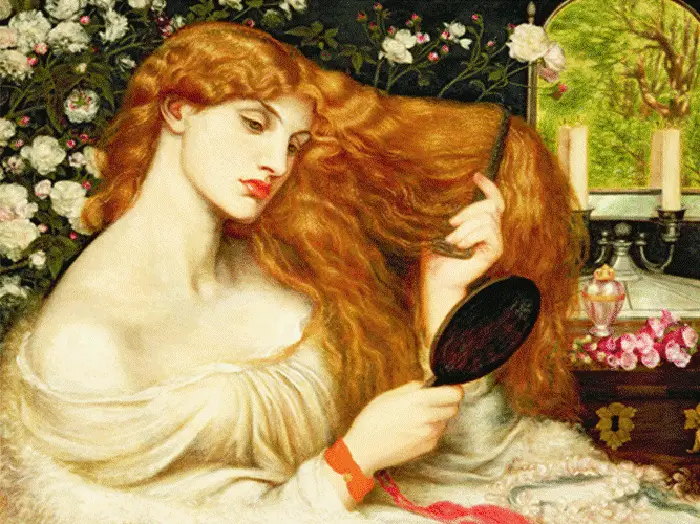
Here’s a brief overview of hair care practices in Ancient Rome:
Personal Hygiene
Romans placed a strong emphasis on personal hygiene. Public baths, called “thermae,” were a central part of Roman culture. People would visit these baths regularly to clean themselves. These baths included hot and cold-water pools, saunas, and areas for exercise and socializing.
Soap and Water
The Romans used soap for cleansing, but they typically employed a mixture of animal fat and plant ashes for this purpose. They would apply this mixture to their bodies and then remove it, along with dirt and sweat, using a strigil (a curved metal tool). Although soap served for body cleansing, it was not a common choice for washing hair.
Hair Care
For hair care, Romans preferred to use oils. They would apply various oils, such as olive oil or almond oil, to their hair and then use a metal or wooden comb to detangle and style it. These oils serve to condition and protect the hair.
Scented Hair Oils
In addition to the practical use of hair oils, Romans also appreciated scented oils. They would often infuse these oils with fragrant herbs and flowers to make their hair smell pleasant.
Herbal Remedies
Romans believed in the power of herbs for hair care. They would use herbal concoctions and infusions to treat various hair and scalp issues.
e. Ancient China
The history of shampoo in ancient China is a rich journey spanning thousands of years. Though not identical to today’s shampoo, ancient Chinese civilization practiced hair cleansing and grooming using herbal mixtures, including ingredients like ginseng, ginger, and camellia oil. These early methods, unlike modern commercial shampoos, relied on natural substances and traditional wisdom to maintain hair health.
The concept of modern shampoo, with its distinct formulation for cleansing hair and scalp, emerged in the late 19th and early 20th centuries in the Western world. These innovations eventually spread to China and other regions, shaping modern hair care practices worldwide.
Here is an overview of the history of shampoo in Ancient China:
Early Cleansing Practices
Ancient Chinese people employed various natural substances to cleanse their hair. One of the earliest known hair-cleansing agents was soapwort (Saponaria officinalis), a plant with natural foaming properties. They would crush and blend the roots of soapwort with water to produce a lather for hair cleaning.
Herbal Cleansing
Chinese herbal medicine boasts a long history. People used many herbs not just for medicinal purposes but also for hair care. They commonly used herbs like ginseng, green tea, and hibiscus to cleanse and condition the hair. People believed that these herbs promoted hair health and growth.
Rice Water
Rice water was another traditional hair-cleansing method in ancient China. Women would rinse their hair with the water used to wash rice. This practice made hair smoother and shinier.
Essential Oils and Aromatics
Ancient Chinese people also employed essential oils and fragrant aromatics to cleanse and scent their hair. They applied oils like sesame oil and camellia oil to moisturize and add shine to their hair and scalp.
Hair Combs
In addition to cleansing practices, the Chinese employed various types of hair combs. They designed some of these combs to remove dirt and debris from the hair and scalp.
Traditional Chinese Medicine (TCM)
Traditional Chinese Medicine, renowned for its holistic philosophy towards health and wellness, places significant emphasis on the necessity of sustaining bodily equilibrium, encompassing the health of both hair and skin. TCM practitioners would prescribe herbal remedies and treatments to address specific hair and scalp issues.
f. Ancient Persia
The ancient Persia has a rich history of shampoo. It was known as “champu,” meaning “to massage” or “to knead.” Persians used natural ingredients like herbs, plants, and oils to cleanse and beautify their hair, massaging these substances into their hair and scalp before rinsing. This practice emphasized both cleanliness and hair health and became a significant part of personal grooming.
Over time, these shampooing traditions spread to other cultures and regions. Eventually, it evolved into the modern liquid shampoo with synthetic detergents that we use today. It’s worth noting that the commercial production of modern shampoos began in the 20th century.
Some common ingredients used in ancient Persian hair care included:
Sapindus (Soapberry)
People used the fruit of the Sapindus tree, known as ‘soapberry,’ as a natural cleanser and foaming agent. It contained natural saponins that people could use to clean their hair.
Herbs and Botanicals
People used various herbs and botanicals such as henna, fenugreek, and amla for their cleansing and conditioning properties. Henna, in particular, gave hair a reddish tint due to its dyeing properties.
Essential Oils
Essential oils, such as almond oil, olive oil, and sesame oil, were commonly used to nourish and condition the hair. These oils were often massaged into the scalp and hair.
Perfumed Waters
Aromatic waters, infused with fragrant flowers and herbs, were used to rinse the hair, leaving it smelling pleasant.
g. Ancient Africa
Various African civilizations had diverse methods of caring for their hair. Moreover, they often used natural oils like shea butter and palm oil for cleansing and moisturizing. The history of shampoo in ancient Africa isn’t extensively recorded; however, historical accounts and archaeological findings suggest a rich and longstanding tradition of hair care across the continent. Although the term “shampooing” might not have been used in the same way as today, maintaining hair and scalp hygiene was crucial for personal grooming.
These practices varied widely due to Africa’s vast size and diverse cultures, with specific details often undocumented and differing from region to region. Nonetheless, the use of natural ingredients and traditional methods played a significant role in these practices and continued to influence modern African hair care traditions.
Here are some key points and practices related to hair care and cleansing in ancient Africa:
Use of Natural Ingredients
Ancient Africans often used natural ingredients to cleanse and care for their hair. These ingredients included various herbs, roots, and oils, depending on the region and the specific cultural practices of different ethnic groups.
Traditional Cleansing Methods
Some African cultures used traditional methods of cleansing the hair and scalp. For example, the Yoruba people of West Africa had a practice known as “Dudu Osun”. The use of black soap involved plant materials like cocoa pod ash, shea butter, and palm oil.
Braiding and Hairstyles
Braiding and styling hair were important aspects of hair care in many African societies. Elaborate hairstyles were often worn to signify social status, age, and cultural identity. These hairstyles required meticulous care and maintenance.
Natural Oils and Emollients
Many African cultures use natural oils like coconut oil, shea butter, and argan oil to moisturize and protect the hair and scalp. These oils were often applied to the hair as part of grooming routines.
Spiritual and Cultural Significance
Hair and grooming practices often had spiritual and cultural significance in ancient Africa. Some hairstyles were associated with specific rituals, ceremonies, or stages of life.
Haircare Tools
Ancient Africans used various tools for haircare, such as combs, hairpins, and ornaments to style and adorn their hair.
2. History of Shampoo in Native American Cultures
Indigenous peoples of the Americas had unique hair and scalp care methods, using natural substances like yucca root or clay to clean hair and remove oil. These practices were diverse across different tribes and regions, rooted in their cultural traditions and environments. While there are variations among Native American cultures, they share common approaches to hair care and hygiene. Today, many Native Americans still blend their heritage with modern hair care, preserving a connection to their ancestral traditions.
Natural Ingredients
Many Native American communities use natural ingredients found in their local environments for hair care. These ingredients often included plant extracts, herbs, and clays. For example, the use of yucca root and soapwort as natural cleansers was common among some southwestern tribes.
Soaproot
Various tribes in California used soaproot, also known as amole or amole lily (Chlorogalum spp.). The bulb of the soaproot plant contains natural saponins, which create a soapy lather when crushed and mixed with water. This lather was used for cleaning both the hair and the body.
Herbal Infusions
Native Americans frequently made herbal infusions or decoctions to wash their hair. These infusions often included plants like sage, cedar, and horsetail, which were believed to have cleansing and healing properties. The specific plants used varied by region and tribe.
Cornhusk Shampoo
In some Plains Indian cultures, cornhusk was soaked in water and used to scrub and clean the hair. The fibers of the cornhusk acted as a natural scrubbing agent.
Ceremonial Hair Care
In many Native American cultures, hair was considered sacred, and its care was often intertwined with spiritual and cultural practices. For example, some tribes would perform special hair-washing ceremonies as part of their religious traditions.
Combs and Hair Accessories
Native Americans crafted combs and hair accessories from a variety of materials, including bone, wood, and shells. These items were used not only for grooming but also for cultural and decorative purposes.
Braiding and Hairstyles
Elaborate hairstyles and braiding techniques were common in many Native American cultures. These hairstyles were not only aesthetically pleasing but also served functional purposes, such as keeping hair clean and manageable.
Cultural Variations
It’s essential to recognize that the hair care practices of Native American tribes varied widely depending on their geographical location, climate, available resources, and cultural traditions. What worked for one tribe might not have been suitable for another.
3. Pre-Columbian North America
Pre-Columbian North America did not document the history of shampoo, but evidence suggests that indigenous peoples had their own methods for hair and scalp care. Indigenous peoples did not have the term “shampoo” as we know it today. Instead, they used various natural substances for cleansing and maintaining hair, with different tribes and regions employing diverse practices and materials.
Moreover, these methods were influenced by local resources. The modern concept of shampoo, as a commercial liquid soap or detergent for hair cleansing, emerged in the Western world in the 18th century. Before that, people in pre-Columbian North America and elsewhere relied on natural, locally available substances for hair care, which differed from modern shampoos in formulation and usage.
Native American Tribes
Different Native American tribes had their own unique practices and traditions when it came to personal hygiene. Many of them used natural ingredients found in their local environments for hair care. For instance, some tribes used yucca plants to create a lathering shampoo-like substance.
Herbal Remedies
Indigenous people in North America were skilled in using local plants and herbs for various purposes, including hair care. They would often make herbal infusions or decoctions that were applied to the hair and scalp for cleansing and conditioning. These herbal preparations were believed to have both cleansing and medicinal properties.
Clay and Mineral Substances
Some tribes used clay or mineral-rich substances found in their regions as hair cleansers. These materials were applied to the hair and then rinsed out to remove dirt and oils.
Natural Oils
Indigenous people also used natural oils, such as those extracted from seeds or nuts, to condition their hair. These oils were applied to the hair and scalp to moisturize and protect against the elements.
Ceremonial Practices
Some Native American tribes intertwined cultural and ceremonial practices with hair care. They considered hair sacred and performed specific rituals to cleanse and purify it, often using natural elements such as water, smoke, or specific plants.
Combs and Hair Ornaments
Native American tribes used various tools like bone or wood combs and decorative hair ornaments to groom and adorn their hair, although these were not directly related to shampooing.
4. Pre-Columbian South America
Pre-Columbian South American indigenous peoples employed their own hair care methods, utilizing natural substances for cleansing and hygiene. Various groups crafted diverse practices and ingredients, mirroring their cultures and environments, despite not designating it as “shampoo” in the contemporary sense. European contact brought forth new ingredients and techniques, paving the way for modern shampoo. Nonetheless, indigenous wisdom regarding natural hair care and local resources has enduringly influenced regional hair care practices.
Soapwort (Saponaria spp.)
Many indigenous cultures in South America, including the Inca and various Amazonian tribes, utilized the soapwort plant to craft a lathering shampoo. Certain species of soapwort roots contained natural saponins, surfactant compounds that produced a foamy lather when combined with water. Indigenous people crushed the roots of soapwort plants and mixed them with water to fashion a cleansing solution for their hair.
Clay and Mineral-Based Cleansers
In some regions, people would use a mixture of clay and water to cleanse their hair. Clays like bentonite and kaolin were often used for their absorbent and cleansing properties. Additionally, some indigenous groups used naturally occurring mineral-rich water sources to wash their hair, taking advantage of the minerals to cleanse and nourish their hair.
Herbal Infusions
Indigenous cultures in South America had a deep knowledge of local plants and their properties. They would create herbal infusions or decoctions from various plants to cleanse and care for their hair. These herbal mixtures often contained plants with natural cleansing and conditioning properties.
Animal Fat and Oils
In some cases, animal fats and oils were used for hair care. These substances not only helped to cleanse the hair but also provided moisture and protection. Indigenous groups might use oils extracted from nuts or seeds of local plants.
Ritualistic and Medicinal Practices
Hair care in many indigenous cultures was often intertwined with ritualistic and medicinal practices. Certain herbs and plants were considered sacred and used in ceremonial hair washing or treatments.
5. Medieval Europe
In medieval Europe, personal hygiene and hair care practices differed significantly from today. During this period, cleanliness was not a top priority due to infrequent bathing and limited access to water and sanitation infrastructure. The concept of modern shampoo, a dedicated hair-cleaning agent, only became popular in the 18th and 19th centuries.
Before commercial shampoos, people often used homemade mixtures or soap bars for hair cleansing. Overall, resource limitations and cultural norms of the time shaped medieval European hygiene and hair care practices.
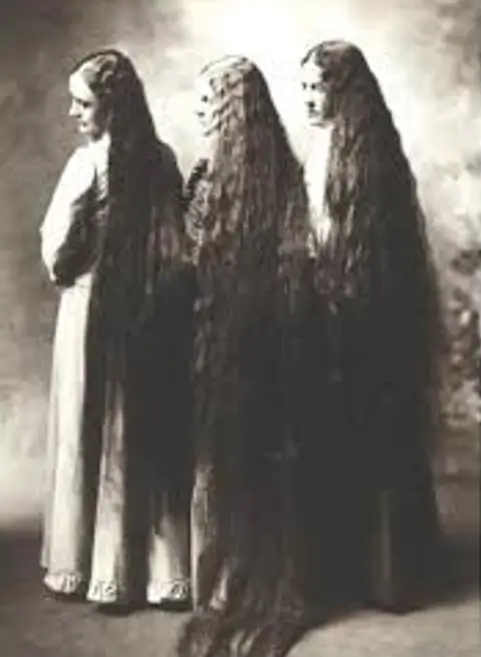
People in medieval Europe used various methods to manage their hair and hygiene, which included:
Dry Shampooing
Instead of using water and liquid cleansers, some individuals would use dry substances like powders or finely ground herbs to absorb excess oil from their hair and scalp. This practice aimed to make the hair appear cleaner and less greasy.
Combing and Brushing
People used combs and brushes made from materials like wood, bone, or ivory to remove dirt, debris, and tangles from their hair. This process helped to distribute natural oils throughout the hair.
Head Coverings
Many individuals, especially women, often covered their hair with veils, hoods, or other head coverings. This served both as a fashion statement and a way to protect the hair from dust and dirt.
Perfumes and Fragrances
To mask odors and add a pleasant scent to their hair, people would use various perfumes and fragrances. These scents were often derived from natural sources like flowers, herbs, and spices.
Herbal Remedies
Medicinal herbs and plants were sometimes used to treat specific hair and scalp issues. For example, nettle and rosemary were believed to promote hair growth and health.
6. History of Shampoo in Renaissance and Beyond
Ancient civilizations practiced shampooing, and it underwent significant evolution during the Renaissance period (14th to 17th century). Although this era is often linked with advancements in art and culture, it also witnessed developments in personal hygiene, particularly in hair care. Today, people worldwide consider shampooing an essential aspect of personal hygiene, with various products designed for different hair types and needs.
Science and technology continue to drive advancements in the industry. Moreover, the history of shampoo during the Renaissance and beyond illustrates how humanity has persistently pursued clean and healthy hair, showcasing the evolution of this practice over time.
Here’s a brief overview of the history of shampoo during the Renaissance and beyond:
Ancient Origins
The concept of cleaning the hair and scalp dates back to ancient civilizations, including the Egyptians, Greeks, and Romans. They used various natural ingredients like oils, herbs, and fragrances to cleanse and condition their hair.
Renaissance Period
During the Renaissance, the practice of hair care continued to evolve. People used various natural substances like eggs, herbs, and oils to wash and condition their hair. However, soap was not commonly used for hair, as it was considered harsh.
Early Shampooing Methods
In some parts of the world, such as India, traditional methods of hair cleansing involved the use of natural substances like soapnuts and amla (Indian gooseberry) as early as the 16th century. These methods were effective in cleaning and conditioning the hair.
Transition to Modern Shampoo
The transition from traditional methods to the modern history of shampoo as we know it today began in the late 19th and early 20th centuries. Soap-based shampoos became more common, and companies started producing commercial shampoos in the late 1800s.
Development of Commercial Shampoos
A German chemist named Hans Schwarzkopf created the first mass-produced shampoo in 1898. This early shampoo was a powder that needed to be mixed with water before use. In the 1930s and 1940s, liquid shampoos became popular, and companies like Procter & Gamble introduced brands like “Drene” and “Pantene,” which are still well-known today.
Advancements in Hair Care
Throughout the 20th century and into the 21st century, hair care products significantly advanced. This advancement included developing specialized shampoos for different hair types and concerns, such as dandruff, color-treated hair, and dry hair. Shampoo formulations also include various ingredients like vitamins, minerals, and botanical extracts to improve hair health and address specific issues.
7. History of Shampoo in the Far East
Far East countries, excluding India and China, have documented their history of shampoo less extensively than these two countries. Nevertheless, various Far Eastern cultures across regions and time periods have practiced their own hair cleaning and maintenance methods. These cultures have emphasized using natural ingredients and traditional techniques to maintain healthy and beautiful hair. However, the Far East likely has a less prominent commercial evolution of the history of shampoo compared to India and China today.
Japan
In Japan, people practiced a traditional hair-cleansing method called “kurokami.” Kurokami utilized ingredients such as camellia oil, yuzu (a citrus fruit), and seaweed extracts to cleanse and nourish the hair. People knew these natural substances for their cleansing and moisturizing properties. Furthermore, Japanese women employed wooden combs to distribute oils and eliminate dirt from their hair.
Korea
In Korea, traditional herbs and oils have a long history of use in hair care. People used ingredients like ginseng, sesame oil, and pine nut oil to cleanse and strengthen the hair. Traditional Korean hair care methods often prioritize maintaining the hair’s natural shine and strength.
Vietnam
In Vietnam, people traditionally used ingredients like rice water and herbal extracts for hair care. They believed that rice water, in particular, cleansed the hair, promoted its growth, and enhanced its shine. Vietnamese women frequently incorporate these natural remedies into their hair care routines.
Thailand
Traditional Thai hair care practices incorporate herbal remedies and natural ingredients. Thai people utilize coconut oil, a common ingredient in their cuisine, to condition and nourish their hair. Thai women frequently apply coconut oil to maintain the softness and shine of their hair.
Indonesia
People in various regions of Indonesia commonly use coconut oil and other natural oils for hair care. Additionally, they also commonly practice hair-washing using traditional Indonesian herbs and spices.
8. History of Commercial Shampoos
In the early 20th century, they introduced the first commercial shampoo as we know it today. They initially formulated it as a liquid soap product with synthetic detergents and chemicals. This represented a significant departure from traditional soap-based methods because it cleansed hair more effectively and had better lathering ability.
Birth of Modern Shampoos
The 20th century witnessed remarkable advancements in the realm of hair care products. In 1927, a German chemist named Hans Schwarzkopf revolutionized the industry by unveiling the inaugural liquid shampoo. This groundbreaking liquid formula brought forth newfound convenience and gentleness in hair care when compared to the earlier soap-based alternatives.
In the 1930s, the Procter & Gamble Company ushered in a wave of innovation with the introduction of “Drene,” a pioneering synthetic detergent. This product eventually evolved into the iconic brand known today as “Dove.” During the same period, in 1934 to be precise, Procter & Gamble introduced “Pantene,” representing a significant leap forward in the evolution of modern shampoos.
1930 marked further progress with the creation of the very first sulfate-based synthetic shampoo, which offered superior foaming and cleansing properties compared to traditional soap-based products. As the mid-20th century approached, a diverse array of commercial shampoos emerged, with each tailored to cater to the unique requirements and hair types of consumers.
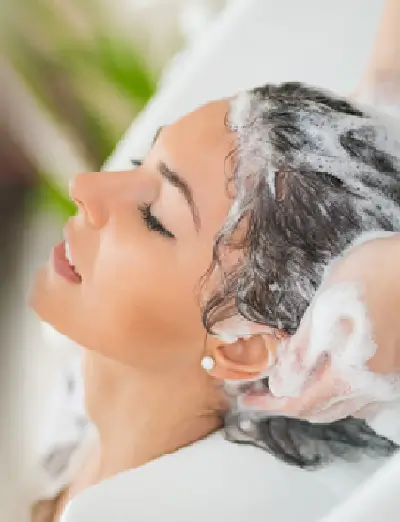
The 1960s and Beyond
In the 1960s, we saw the introduction of specialized shampoos, such as those designed for color-treated hair and anti-dandruff shampoos.
The 1970s and 1980s brought a surge in marketing and advertising for different shampoo brands, with each claiming unique benefits.
In recent decades, the market has continued to evolve with the introduction of organic, natural, and sulfate-free shampoos, catering to the growing consumer demand for gentler and environmentally friendly products.
Contemporary Trends
Today, the shampoo market is diverse, offering a wide range of formulations, including sulfate-free, paraben-free, and cruelty-free options. Additionally, there’s a growing interest in natural and organic ingredients, as well as a focus on addressing specific hair concerns such as frizz control, volumizing, and hair repair.
Commercial shampoos have come a long way from their ancient origins, evolving through chemistry, consumer demand, and advancements in hair care science. They continue to play a significant role in daily personal grooming routines worldwide.
Over the decades, shampoo formulations continued to improve. Ingredients such as surfactants (detergents), conditioners, fragrances, and other additives were incorporated to make shampoos more effective at cleansing, conditioning, and giving the hair a pleasant scent.
9. Conclusion
We have witnessed a remarkable journey from ancient herbal concoctions to high-tech formulations that cater to diverse hair types and needs as we trace the history and evolution of commercial shampoos. Not only advancements in science and technology but also the changing preferences and demands of consumers reflect this evolution. As we stand at the threshold of the future, considering what further innovations and transformations may lie ahead for the humble shampoo is intriguing.
One thing is certain: human ingenuity, adaptability, and our constant quest for improved ways to care for ourselves are all testified by the history of shampoo. So, the next time you reach for that bottle of shampoo in your shower, take a moment to appreciate the rich and evolving history that has led to this simple act of self-care. Perhaps, with a bit of nostalgia, imagine how the future of shampoo might continue to shape our daily routines and the world of commerce.

